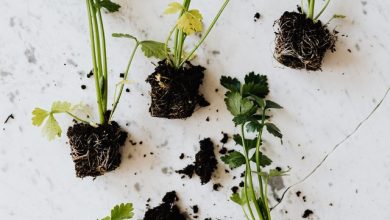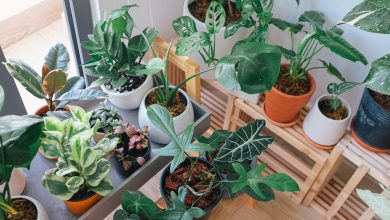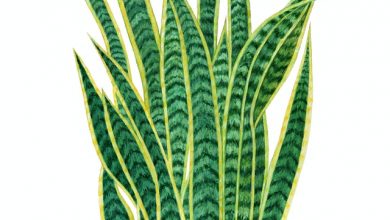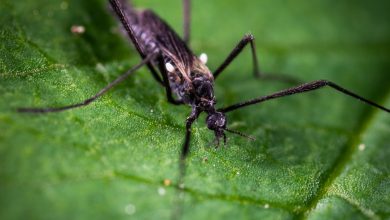Starting an Indoor Garden
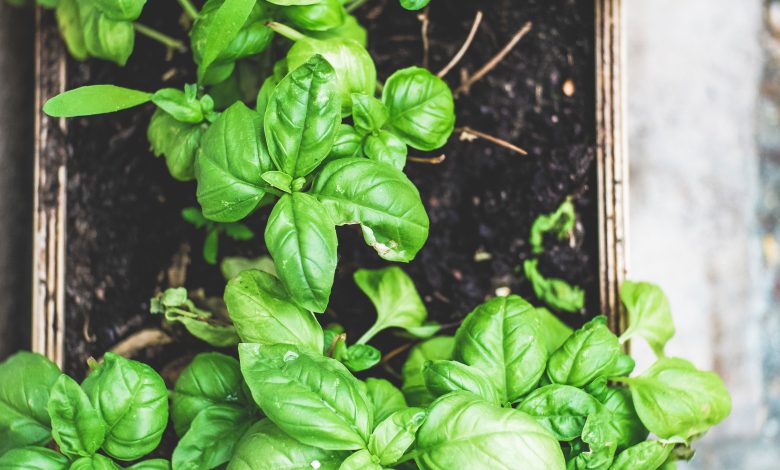
For those that don’t have access to a full garden or are living in an apartment, you are able to take advantage of all the benefits of growing your own food. Growing vegetables and fruits helps save a little money while taking advantage of an opportunity to get closer to your food. It’s also a way to relax as you use your hands and destress your mind.
If you already purchased your seeds, a good place to decide what is best for you is the back of the seed package. Plant varieties differ on what’s needed for optimal growth. But, before that, learn about the environment a plant requires in order to produce yield. Just about any plant — even a citrus tree — can grow in a container with the right soil, water, and light combination.
Soil
The composition of soil is different in the ground than it is in a standard potting mix. Soil from outside is heavy and may contain pests that can infiltrate your indoor garden — and your other indoor plants. It is also host to clay, sand, and silt. Potting mixes provide these ratios, but in varying volumes depending on the types of plants. That sandy, powder type of dirt is, generally, what you want. It allows firm packing of the plant. The open texture yields to growing roots for a happy plant. An indoor planting mix will provide you with organic material that will hold onto nutrients and moisture, but still allow drainage.
Nutrient levels in a mix are not meant to differ, but natural ground soil simply acts differently than its stagnant counterpart. Outdoors, water moves toward below-ground root systems as it seeps into the Earth. This movement, or gravity, really, keeps the soil moist and packed with nutrients without depleting. Potted-plant soil, conversely, drains water faster and may require a more frequent nutrient application schedule. Ground soil isn’t the right answer to your empty indoor garden planters.
It may not be your style to fertilize; many don’t. However, be sure your soil matches what is required by each plant. It’s essential that soil is properly maintained — whether to be kept, dry, moist, or wet — for the life of your plant. Or you can decide to cultivate your plants using a liquid nutrient solution, commonly called hydroponics. This type of gardening, generally, sees faster growth in vegetables, as they are not limited by a container. Look out for other pieces related to this topic on PurpleFlower.com
For those that have successfully kept an edible garden going for years, be aware that nutrients deplete after a while. When this happens, a buildup of salt occurs and stunts future plant growth. In these instances, soil should be replaced every one to three years to ensure that plants — most probable, fruit trees — are getting adequate nutrients. In addition, plant fertilizer should be added at a rate dependant on the plant (which will be listed on your seed packaging). Though, generally, add-ins should occur every couple of weeks. When you fertilize, be sure to flush the salt out of the soil with water. This will help your garden piece settle into the new environment.
Water
Perhaps an even more crucial piece to gardening (indoors and outdoors) is water. This can be a bit tricky: Too much water and the plant could die; too little water, the same result. Generally, soil should be kept moist. Most indoor plants that are grown in containers need to be watered once or twice a day.
Watering too little can stunt plant growth or kill individual roots that lead to an unavoidable death of your plant. When this happens, the plant will appear crispy. Watering too much, however, causes root rot and the death of your plant. Sometimes, be forwarned, plants tend to play tricks on gardeners. Check soil for moisture with your hands or with a moisture meter. Both too little and too much water will make most plants wilt and change colors.
Drainage is key in watering, so be sure to have a dish or other method of catching excess water. The best practice is to water for about ten seconds, ensuring water is coming through your pot. Empty your saucer almost immediately after to ensure the soil doesn’t absorb any extra. This process may need to be repeated several times a day depending on how rapidly the soil drys and each specific plant’s need. Be sure to water both the soil and the leaves to prevent dryness.
Space and Light
Indoor plants can nestle in windowsills or take up an entire room in your skyscraper apartment. Wherever your plants are set up, be sure that drainage won’t seep into carpets. Try to find a place with tile or other hard floorings for easy clean-up when water inevitably falls. Gardening can be messy, so make sure you pick an area that won’t be a hassle to clean up.
Generally, plants that are native to warmer temperatures have a better chance of surviving than those from colder climates. Prior to purchasing a plant, plan ahead of where it is going to go and during what time of year. Keeping plants near a window during the winter may cause problems if that plant gets too cold or the soil freezes. Ensuring that plants have enough light is a common struggle among indoor gardeners. If you notice your plant’s new growth aiming to the light or coloring turning pale, try moving the container closer to a south- or west-facing window. You may even want to purchase an artificial light like the ones described above.
Types of Plants to Try
Anything can be grown inside, however, there are limitations that outdoor gardens don’t encounter. These include light and space restrictions, as well as the possible damages the gardener can inflict on their own indoor garden. If you’re just starting out, or simply looking for a new plant to grow, these veggies are known to be good for beginning indoor gardeners.
Vegetables to Grow Indoors
Carrots – Carrots are easy to grow inside a container, so long as the seeds are rooted deep into the soil. Some weeding will be needed, as carrots need lots of ample space for growth. Make sure the containers are in a well-lit area, even use artificial light, and just lovingly wait for your harvest.
Beets – These guys require a container that is about 17 inches deep with drainage holes. The soil should be sandy in texture with a neutral pH level. Beets, like carrots, don’t like to be in a crowded environment. Make sure seeds are planted within about a foot of each other and about a quarter of an inch deep.
Onions – Though indoor-grown onions may not produce a yield like the those that could be achieved outside, they are still a great veggie for indoors. They don’t require a lot of space or time. If you place a whole onion inside a pot of indoor planting mix, it will sprout. New growth can also be started in a glass of water.
Fruits to Grow Indoors
Strawberries – Between early summer and mid-autumn, strawberries will continuously produce a yield — so long as there is a LOT of light. Plant strawberries in a container by late autumn in a five- to six-inch container and water often.
Mulberries – Ideally grown in a large pot, mulberry trees perform best under bright, indirect light. Plant a few months before summer in a deep pot in a well-ventilated room. This berry also likes it warm, as most fruits do. So be sure the area your tree is kept in is at least 55 degrees Fahrenheit and no hotter than about 70 degrees Fahrenheit.
Lemon tree – Lemon trees tend to prefer acidic, loam-based soil. This means the soil contains more silt and sand compared to clay. The trees need to be in direct sunlight for most of the day, with high humidity. Try placing the tree south-facing in a room with a window to allow fresh air during the summer. If you live in a dry area, try a humidifier to maintain the humidity level in the room.
Herbs to Grow Indoors
Basil – This herb likes to be warm, so a western or south-facing room will suit basil well. The soil should be nutrient-rich and fast-draining. Be mindful that this plant will not last long, but it will produce leaves and grow within several weeks. When the stems start to appear like wood, it’s time to plant a new batch.
Bay laurel – Bay is similar to basil in that it needs a lot of light and fast-draining soil. Be sure the room in which the container sits isn’t stuffy, as bay needs air in order to fight off disease. Be mindful of possible insects, as shield-like scale bugs are attracted to this plant. Neem oil will prevent these outbreaks.
For the best use of the herb, pick leaves and set them aside in proper dry storage containers. The longer you can wait to use your Bay leaves, the better they will taste.
Chives – Chives, like most herbs, need bright light and a south-facing window. Once the onion-flavored herb starts to grow, you may want to trim them for your meals. When you do this, be sure to leave about two inches of growth within the pot so the plant can still resprout.
Sources
Jennifer Poindexter. “24 Newbie-Friendly Vegetables You Can Easily Grow Indoors” Morning Chores.
https://morningchores.com/growing-vegetable-indoors/
Missouri Botanical Garden. “Environmental Problems of Indoor Plants.”
Staff report. “How to Grow Beets Indoors” Do It Yourself
https://www.doityourself.com/stry/how-to-grow-beets-indoors
Carol Speake (2019). “Growing Onions indoors – 6 Ways to Grow Onions in Containers” The Gardening Cook
https://thegardeningcook.com/growing-onions-indoors/
Amanda Sims (2019). “8 Types of Indoor Fruit Trees You Can Grow in Your Living Room” Food52
https://food52.com/blog/16084-7-types-of-fruit-trees-you-can-grow-in-your-living-room
Ann Whitman (2019). “How to Grow Herbs Indoors” Gardener’s Supply Company
https://www.gardeners.com/how-to/herbs-indoors/8920.html
Frank Rauscher (2018). “Same but Different: Indoor vs. Outdoor Nutrients” Maximum Yield


